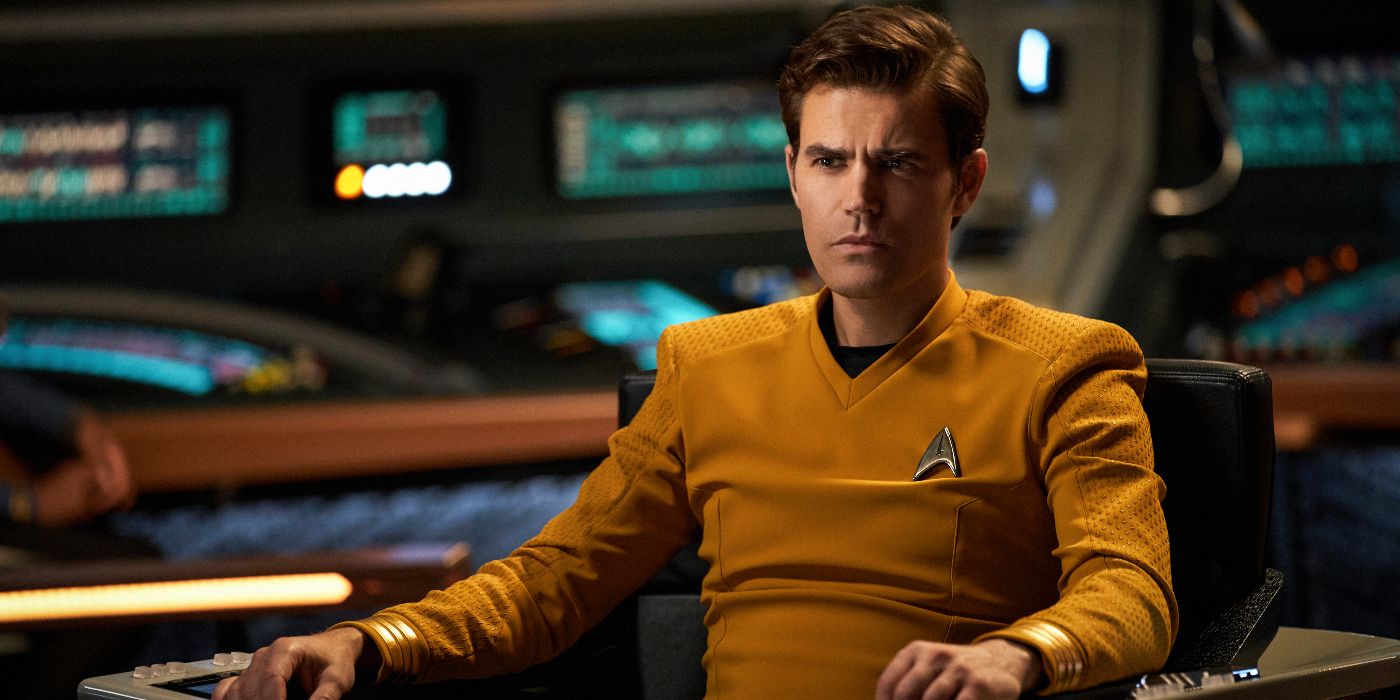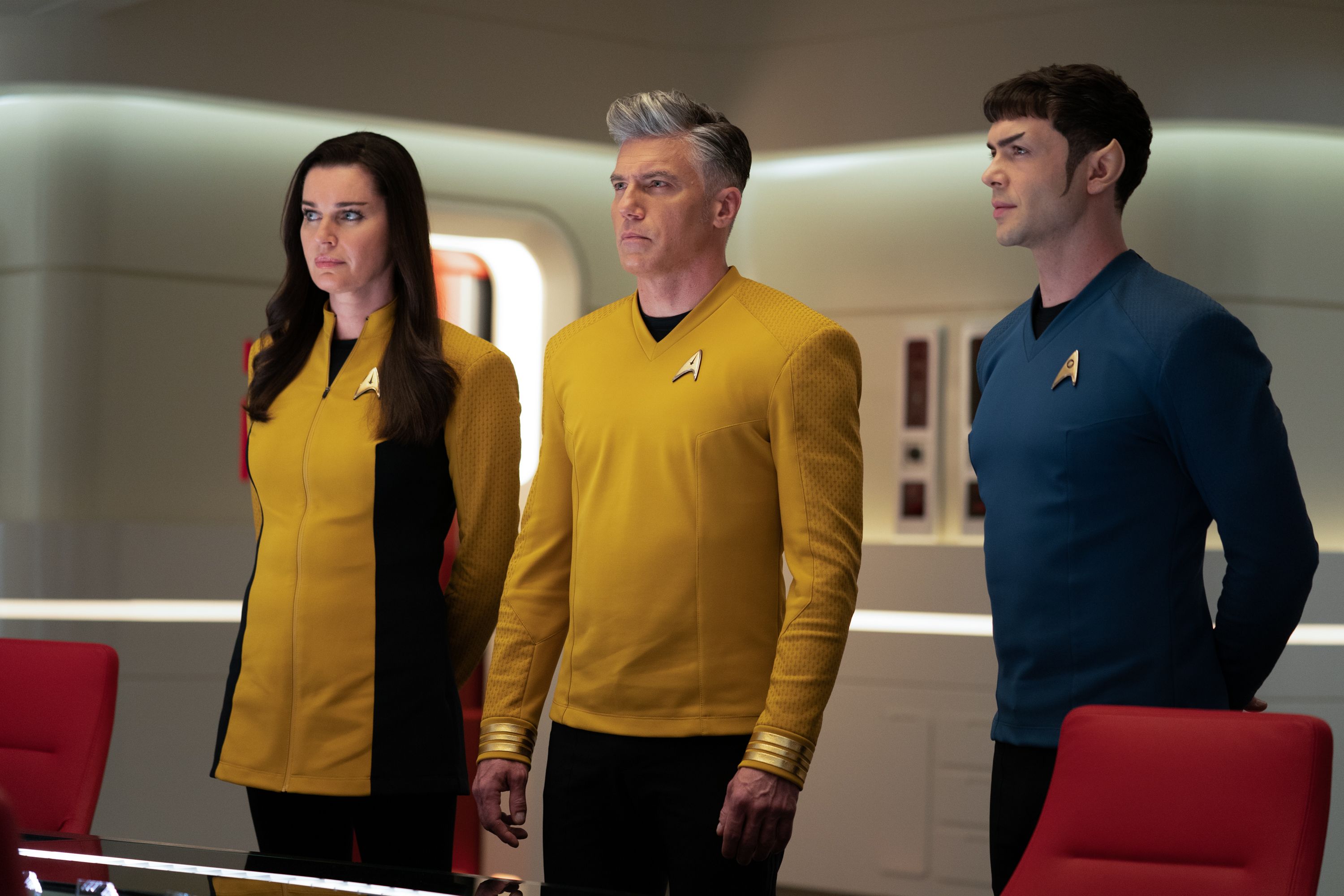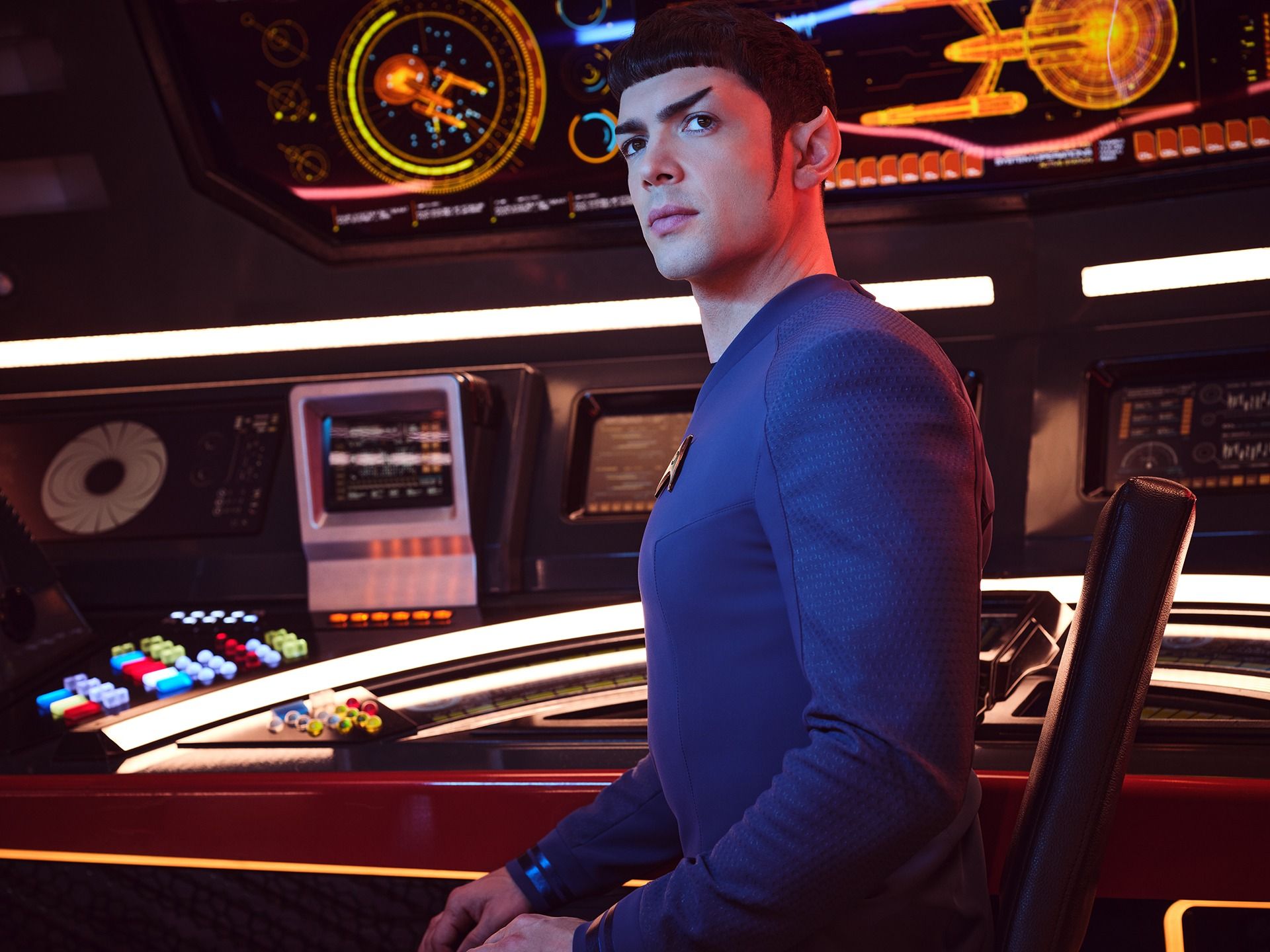Star Trek: Strange New Worlds follows the adventures of Captain Christopher Pike (Anson Mount) and his crew aboard the USS Enterprise as they carry out their mission to “explore strange new worlds, to seek out new life and new civilizations, to boldly go where no one has gone before.” It includes familiar faces such as Spock (Ethan Peck), Uhura (Celia Rose Gooding), Nurse Chapel (Jess Bush), and Captain Pike himself. Another name will soon be added to that distinguished list: that of James T. Kirk, captain of the Enterprise during Star Trek: The Original Series. The series has cast Paul Wesley (of The Vampire Diaries fame) as the younger version of the character, who will be shown as an officer on the USS Farragut. Star Trek: Strange New Worlds has so far impressed audiences with how it blends new adventures with the spirit of the original series. However, making Kirk a major character would deplete both its nostalgia appeal and its novelty, thereby taking away what makes it so effective as a show.
As is fairly well known at this point, the original pilot for Star Trek: The Original Series–called “The Cage”--was rejected by NBC. This episode featured Christopher Pike (Jeffrey Hunter) as captain of the USS Enterprise, with Spock (Leonard Nimoy) as science officer and a woman referred to as Number One (Majel Barrett) as first officer. When the series was refashioned, Gene Roddenberry replaced Pike with Kirk (William Shatner), and Spock was the only character carried over from the original concept. Barrett was the second actor who survived the change, but was recast as a new character: Nurse Christine Chapel. One of the great things about Star Trek: Strange New Worlds, which the show itself has been leaning into, is that it's essentially the TV show that was turned down by NBC back in 1964 when it rejected “The Cage.” Just like in “The Cage,” Spock and Number One are part of Captain Pike’s crew. They are also on that five-year mission to explore space. From a certain angle, Strange New Worlds has waited more than five decades to be greenlit. That history connects it to The Original Series, allowing it to more easily tap into the feeling of that era. This concept’s brilliance lies in the fact that it exists in the world of the original series but, since “The Cage” was never picked up, represents years of unexplored potential for the characters before Kirk’s captaincy of The Enterprise.
Though “The Cage” wasn’t picked up by NBC, it still exists in Star Trek canon–and this is where introducing Kirk into Strange New Worlds becomes potentially tricky. Pike becomes a character in Season 1 of The Original Series, and in "The Menagerie, Parts I and II," most of the footage from the original pilot is used as a flashback–thereby making it part of the show’s canon. Spock asserts that he served with Captain Pike for 11 years, and Kirk says that he met Pike when Pike was promoted to Fleet Captain, a position that is never explained and which could therefore be interesting to see in Strange New Worlds. If Pike does get this position, he will likely meet Kirk–which isn’t a problem in and of itself. However, while Kirk’s meeting with Pike is canon, the very appeal of Strange New Worlds is its balance between the old and the new. James T. Kirk embodies the difference between the Star Trek of “The Cage,” and TOS, and therefore also between TOS and Strange New Worlds.
“The Cage” was rejected for being too cerebral, but Star Trek ended up being cerebral anyway, and Kirk himself, unlike how much of pop culture remembers him, has a strong moral and philosophical streak that defines many of his actions. But Kirk's more intellectual qualities are wrapped up in a nice bare-chested, swagger-filled, lady-killing, twinkly-eyed, karate-chopping package. For NBC, meanwhile, Hunter’s solemn Captain Pike was all pill with not enough sugar. However, since his original onscreen appearance, Captain Pike has become considerably more human–and other starship captains since TOS have proven that a more parental leader can also be compelling. The variety among the captains in various Star Trek series affects the shows’ different atmospheres. The fact that Pike is the captain now and not Kirk is what makes Strange New Worlds what it is — and while it could potentially be fitting to afford Kirk the same amount of screentime that Captain Pike himself receives in TOS, giving him much more than that violates the essence of Strange New Worlds. In short, Captain Kirk has already had his series: Strange New Worlds purports to give Pike the floor but would hinder this endeavor by bringing back the captain who replaced him.
There is also the question of Kirk and Spock’s friendship, which is one of the most famous in television history. TOS doesn’t show them meeting for the first time. Rather, they are already friends when it begins, though that bond will strengthen throughout the series to become the legendary bromance that is so influential to this day. Strange New Worlds has taken a leap by recasting beloved characters such as Spock and Uhura; however, it is one thing to recast a person, and another thing entirely to recast a relationship. If Kirk is around for more than two episodes of Strange New Worlds, and if Spock is as prevalent as he has been, chances are that the two will meet. Granted, the relationship portrayed here would not be an established friendship, but rather the interactions between two people who have just been introduced. Nevertheless, chemistry is something that can be felt from the beginning of a relationship, and since so many fans are attached to the rapport between Nimoy and Shatner, the bar for any new interactions is mercilessly high. That nostalgia factor, once in the show’s favor, is now its enemy. Additionally, any interaction that Kirk has with Spock will further blur the line between Strange New Worlds and The Original Series. TOS already replaced Strange New Worlds once, back in 1964. Bringing back both Kirk and potential interactions with Spock isn’t the right way to make sure that doesn’t happen again.
With a character of as much importance as Kirk, who is central to so many beloved storylines, potentially breaking canon also becomes an issue when reintroducing him as a character. Every Star Trek show seems to take place in the same universe: characters occasionally cross over, references abound, and there was that one time that the crew of Deep Space Nine went back in time and infiltrated “The Trouble With Tribbles.” If Kirk becomes too well acquainted with Captain Pike, it may contradict the events and characters’ reactions in “The Menagerie.” These episodes are about the mysterious lengths an otherwise unemotional Spock will go to for Pike, with whom, the show reveals, he has served for over a decade. None of his current crewmates know of his fraught past, and it is this mystery that makes for the tragedy and drama of the original series. Spock and Kirk’s friendship is deepened by Kirk’s greater understanding of Spock’s nature, and of his history. It would be genuinely upsetting if the emotional effect of these episodes were affected by a change in continuity. Films in Star Trek’s Kelvin timeline altered many events from the original series, but the central conceit of those movies is precisely that they take place in an alternate reality. In a series that supposedly takes place in the same reality, in which there is so much unexplored territory, potentially contradicting beloved stories from the past by bringing in unnecessary, already well-trodden material feels wrong.
It feels reasonable for Kirk to return for a similar amount of time that Pike was shown in TOS, especially since Pike becoming Fleet Captain seems a vital part of his career. Audiences enjoy Strange New Worlds’ proximity to TOS, but they also appreciate that, while it has this nostalgia factor, it’s still its own show. It doesn’t try to replace the original. Bringing back Kirk for an extended period of time would change that, destroying the very thing that makes the show appealing while also limiting opportunities for creative growth beyond past other Star Trek series.



